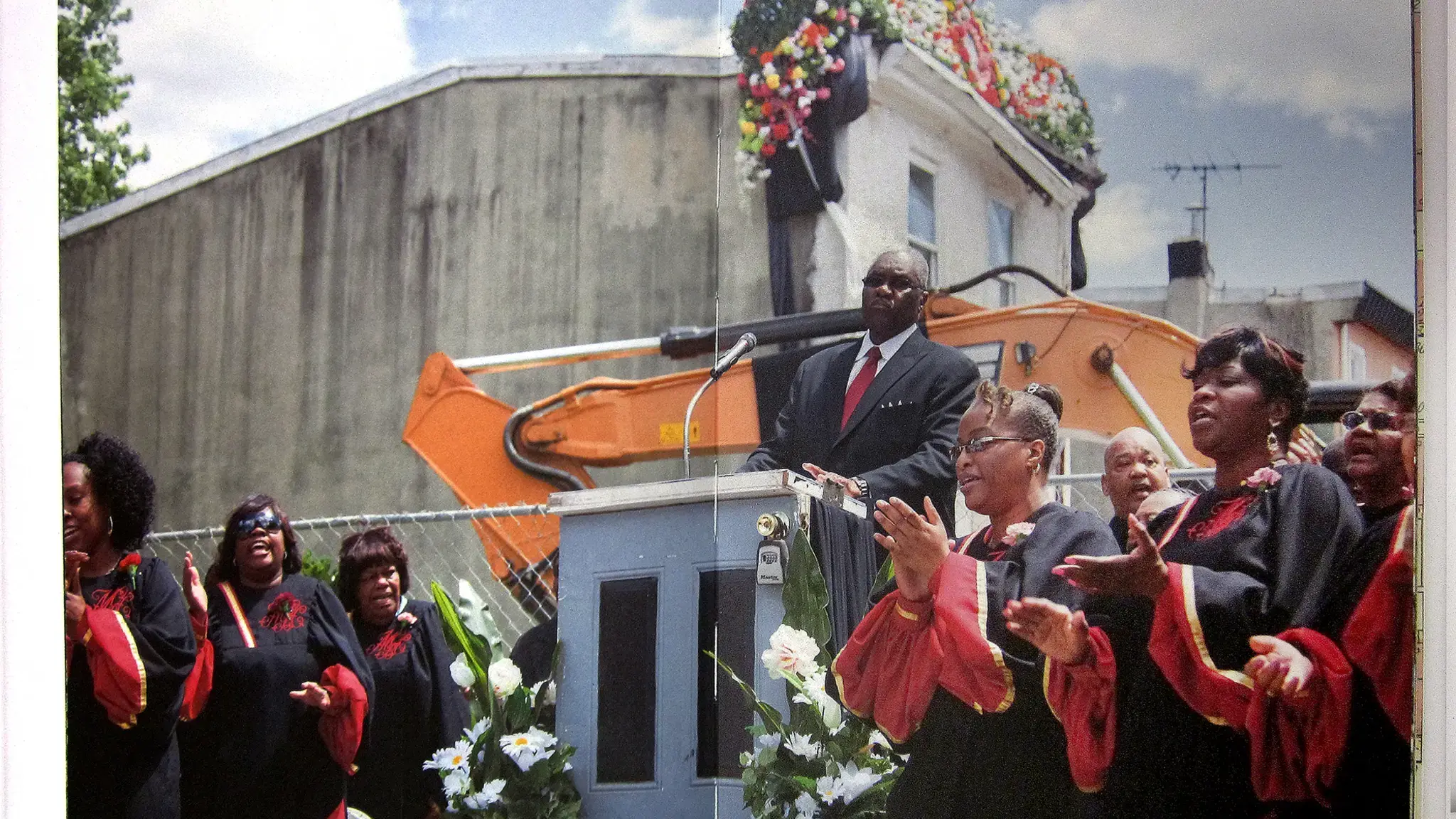

In this excerpted essay from the publication for Temple Contemporary’s Funeral for a Home, arts commentator and organizer Sue Bell Yank offers a first-person account of the somber, yet cheerful “home going” memorial for the house at 3711 Melon Street that brought together over 400 community members to honor the lives and memories of the Mantua home before its demolition. Yank assesses the project’s relation to issues surrounding race and economic disparities, and its role in creating a space for public dialogue.
“Having a day-long event to celebrate the “passing” of a house certainly engages with spectacle, ritual, and a potential for an over-the-top, maudlin aesthetic bordering on the ridiculous. But the funeral was restrained and elegant, hitting notes of familiarity, beauty, comfort, and style. From the flower arrangements to the procession-route wreaths to the quietly decorated coffin/dump truck, the aesthetic decisions were just shy of overt, giving the impression of sincerity and sobriety rather than gimmick. The procession, community meal, food and music were designed carefully to allow for the maximum connection between the disparate groups of people who came together. The funeral was ultimately arranged by the artists and organizers to orchestrate opportunities for crossing boundaries, something to talk about, something to rally around, some further understandings to be worked through together.
Funeral for a Home can be assessed in relation to a lineage of critiques including race, privilege, and economic disparities.1 These critiques are often very legitimate and can plague all such projects. Are they reasons for inaction? When applied as blanket issues, they can result in throwing away all possibilities for learning, for inter-neighborhood or inter-cultural connection and dialogue, for reciprocity. The organizers and artists of Funeral for a Home were aware of these pitfalls from the beginning, and made it exceedingly clear what they were and were not promising to Mantua. Moreover, they demonstrated their respect and commitment by going to local churches, attending community meetings, and learning the history of “the Bottom” through dozens of oral histories, interviews, and research for the better part of a year. Only then did they feel equipped to make decisions about the funeral, and even so they wanted to “allow people to do what they do” within the strengthened relationships they had worked to form.
While I was walking away from the residents and artists dancing in the middle of Melon Street after the meal, the words of the recently-passed Maya Angelou came back to me, as read (very appropriately) by De’Wayne Drummond only an hour before during the ceremony: “I’ve learned that people will forget what you said, people will forget what you did, but people will never forget how you made them feel.” By making Funeral for a Home of Mantua, something was left behind for Mantua—the opportunity to radicalize neighbors, and the possibility to shift entrenched outside perceptions. For a moment, perhaps both residents and visitors felt a little differently about the neighborhood, and they wanted to talk about why.”
Funeral for a Home is available directly from Temple Contemporary, as well as from local bookstore Brickbat Books.
Sue Bell Yank is an arts organizer and writes about social practice in contemporary art. She has worked on the Watts House Project and was formerly the Assistant Director of Academic Programs at the Hammer Museum.